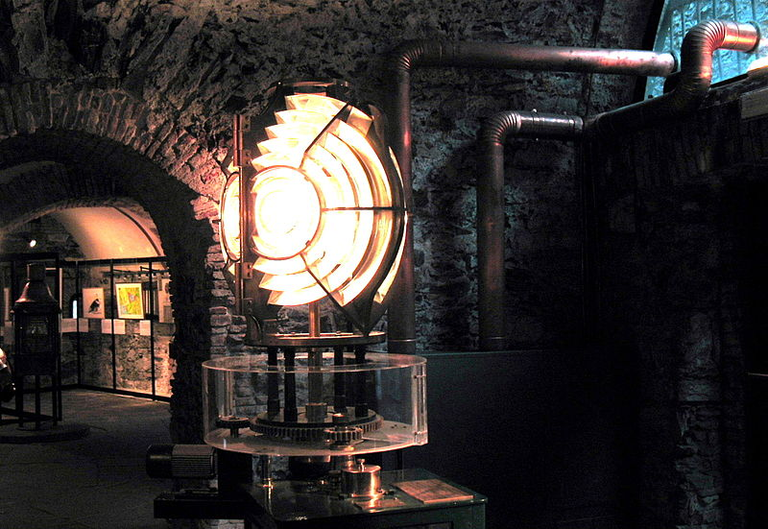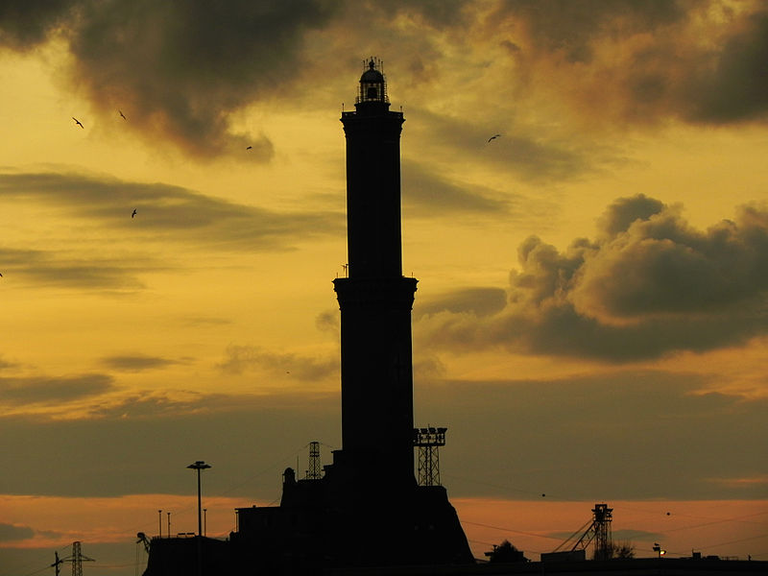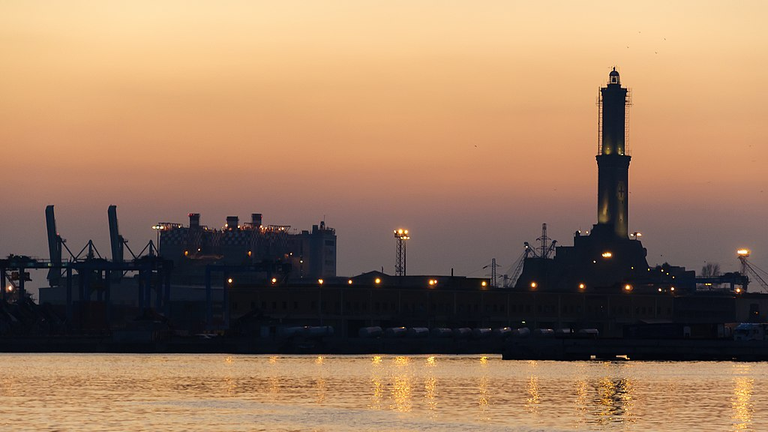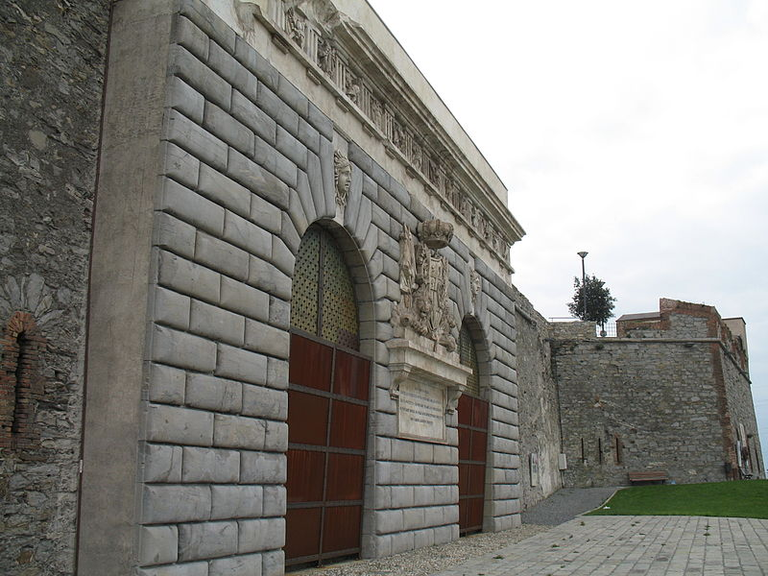
I spent most of my childhood and youth in Genoa, the capital of Liguria.
Unlike other Latin American immigrants of European descent, my parents settled on the Ligurian coast and stayed there for more than two decades.
That is why this land of historic sailors, of unparalleled natural beauty, has remained so imprinted in my memory.
Said the great author Alexandre Dumas:
‘Lying at the bottom of its gulf with the careless majesty of a queen ... Genoa comes, as it were, to meet the traveller’ (A. Dumas, 1841).

It is a pity that travellers pass through it most of the time in haste, preferring other places in Liguria, such as Cinque Terre or Portofino, thus missing the opportunity to discover a city rich in history, hidden treasures and suggestive corners.
The history of Genoa is told above all along Via Garibaldi ei Rolli, home to marvellous residences little known to Italians but rich in extraordinary works of art.
The charm of this city wedged between the mountains and the sea, fragmented between past and present, crossroads of different peoples and cultures (it is not by chance that the medieval name of Genoa is Janua, or ‘gate’ in Latin), has attracted the attention of writers, poets and songwriters, who in their verses have spoken of its beauty, its contrasts, its hidden soul.
First of all Fabrizio de André, who is celebrated today with a small but wonderful museum in Via del Campo 29. Although Genoa is known above all for its Aquarium, the ancient maritime republic encloses within its walls wonderful testimonies of its glorious past, but also bold and modern works that have made it a sort of capital of modern Italian architecture.
Strolling through the city, you can admire noble palaces and ancient churches, lose yourself in the labyrinth of characteristic alleys (carroggi) in which the old city centre is organised, visit interesting museums, let yourself be surprised by the symbols of the city, the new Genoa, which looks to the future but is a magnificent guardian of an ever-present past.

We begin this virtual tour by the symbol of Genoa, La Lanterna (the lighthouse), emblem of a city that developed on the basis of its port (and still continues to do so today, adding to the cargo port a tourist port where cruise ships from all over the world arrive, right in the centre of the city).
The Lighthouse of Genoa.

Proof of the maritime vocation of this city is its lighthouse, commonly called ‘the Lantern’, which has always been the symbol of Genoa. Standing 77 metres high, the historic tower rises on the remains of a 40-metre hill, making it approximately 177 metres above sea level.
Created to signal ships entering the port but also to control their movement within the port, the tower was built in the 14th century on the site of a lighthouse that had existed since 1128 and operated with a wood-burning system (bonfires).
In 1326 the first olive oil lantern was installed and in 1340 the municipal coat of arms was painted on the lower part of the tower.
Its current appearance is the result of the reconstruction carried out in the 16th century and despite the interventions following the events of the war and the lightning strikes, the lantern appears as it did then: a tower with two slender superimposed volumes with a gallery at the top of each of them (you can reach the first terrace), an interior staircase with 172 steps, a lantern inside which the lighting elements are located.
Attached to the tower is the Lantern Museum, a multimedia museum dedicated to the city and the provincial territory, which can be reached by an 800-metre walk from the Ferry Terminal along the old city walls to the lighthouse.

The Lanterna is located at the eastern end of the district of Sampierdarena, on an isolated rock that is today entirely inserted in the port context, the extreme tip of what was once the promontory of San Benigno that divided the ancient municipality of Sampierdarena from that of Genoa.
The site where it was built was called a promontory because, before the hand of man redesigned the contours of the Genoese bay, it was surrounded on three sides by the sea. To the west, the hill bordered the ancient port of Genoa, what is now the old harbour. Over time the hill took the name Capo di Faro or San Benigno, after the name of the convent of the same name that stood on it. Today, in fact, the hill no longer exists, having been razed in the second half of the 1920s to create new spaces for the town, the port itself and its production facilities, and the only thing that remains is precisely the small rocky branch from where the lighthouse stands.
At the same time, between 1920 and 1930, work was carried out to enlarge the port of Genoa, with the creation of the new Sampierdarena quays, obtained by means of a major filling in of the sea. After the operation, the Lanterna rock no longer lies directly on the sea, but a short distance from it, near the quay of Ponte San Giorgio.
The Lantern Gate
Since the Lanterna stood on the main communication route between Genoa and the west, until the San Benigno hill was excavated in the early 20th century, when the so-called seventeenth-century Mura Nuove (New Walls) were built, a gate was built inside them exactly at the foot of the Lanterna.
Thus, as historian Federico Donaver recalls, the old gate, kept in place until its demolition in 1877, was flanked by a new one built between 1828 and 1831, called Porta Nuova, Porta della Lanterna or Porta del Chiodo after its designer, General Agostino Chiodo. In fact, as Donaver himself wrote, the same gate and the adjacent streets took ‘the name of the Lanterna or Lighthouse for sailors that rises 127 m above sea level, whose construction dates back to 1549’. The double-arched gate was carved into the rock face and originally had two drawbridges supported by chains running on bronze wheels, soon replaced, due to changing practical needs, by a fixed gangway. The neoclassical façade is built of promontory stone (taken from the same hill behind the Lanterna) and white Carrara marble, a combination that counts illustrious precedents in the city's architecture. Remarkable is the sculptural detailing, consisting of metopes, jellyfish heads placed in the keystone and the coat of arms group.
The gate building was demolished in 1935. As a result of controversy, in order to preserve the memory of the gate, the façade alone was dismantled and rebuilt in its current position, leaning against the Lanterna wall, about fifty metres to the south and rotated 90° from its original position, losing its original function as a gate.



La mayor parte de mi infancia y juventud la pasé en Génova, capital de la Liguria.
A diferencia de otros inmigrantes latinoamericanos, descendientes de europeos, mis padres se radicaron en la costa ligure y de ahi no se movieron durante mas de dos décadas.
Por esp es que esta tierra de navegantes historicos, de una belleza natural inigualable, me ha quedado tan impresa en la memoria.
Decia el gran autor Alejandro Dumas:
“ Tumbada en el fondo de su golfo con la descuidada majestad de una reina … Génova viene, por así decirlo, al encuentro del viajero ” (A. Dumas, 1841).
Es una pena que los viajeros la atraviesen la mayoría de las veces a toda prisa, prefiriendo otros lugares de Liguria, como Cinque Terre o Portofino, perdiendo así la oportunidad de descubrir una ciudad rica en historia, tesoros escondidos y rincones sugerentes.
La historia de Génova se cuenta sobre todo a lo largo de Via Garibaldi ei Rolli , hogar de maravillosas residencias poco conocidas por los italianos pero ricas en extraordinarias obras de arte.
El encanto de esta ciudad encajada entre la montaña y el mar, fragmentada entre pasado y presente, cruce de pueblos y culturas diferentes (no es casualidad que el nombre medieval de Génova sea Janua, o " puerta " en latín), ha llamado la atención . escritores, poetas y cantautores , que en sus versos han hablado de su belleza, de sus contrastes, de su alma escondida.
En primer lugar Fabrizio de André , a quien hoy se celebra con un pequeño pero maravilloso museo en Via del Campo 29. Aunque Génova es conocida sobre todo por su Acuario , la antigua república marítima encierra entre sus muros maravillosos testimonios de su glorioso pasado, pero también obras audaces y modernas que la han convertido en una especie de capital de la arquitectura italiana moderna.
Así, paseando por la ciudad podrás admirar palacios nobles e iglesias antiguas, perderte en el laberinto de callejones característicos (carroggi) en los que se organiza el núcleo de la ciudad antigua, visitar interesantes museos, dejarte sorprender por los símbolos de la ciudad. la nueva Génova, que mira hacia el futuro pero que es magnífica guardiana de un pasado siempre presente.
Comenzamos este recorrido virtual por el simbolo de Genova, La Lanterna (el faro) emblema de una ciudad que se desarrollo en base a su puerto (y aun hoy lo sigue haciendo agregando al puerto de cargas un puerto turistico donde llegan cruceros de todo el mundo, en pleno centro de la ciudad).
La Lanterna.

Prueba de la vocación marítima de esta ciudad es su faro, comúnmente llamado " la Linterna ", que ha sido desde siempre el símbolo de Génova . Con 77 metros de altura, la histórica torre se levanta sobre los restos de una colina de 40 metros, por lo que se encuentra aproximadamente a 177 metros sobre el nivel del mar.
Creada para señalar a los barcos que entran en el puerto pero también para controlar su movimiento dentro del mismo, la torre fue construida en el siglo XIV en el lugar donde ya existía desde 1128 un faro que funcionaba con un sistema de combustión de leña (hogueras).
En 1326 se instaló el primer farol de aceite (de oliva) y en 1340 se pintó el escudo municipal en la parte inferior de la torre.
Su aspecto actual es fruto de la reconstrucción llevada a cabo en el siglo XVI y a pesar de las intervenciones posteriores a los acontecimientos bélicos y a los rayos, el Farol aparece como entonces: una torre con dos esbeltos volúmenes superpuestos con una galería en lo alto de cada uno de ellos (se puede llegar a la primera terraza), una escalera interior de 172 escalones, una linterna en cuyo interior se ubican los elementos de iluminación.
Adosado a la torre se encuentra el Museo de los Faroles , un museo multimedia dedicado a la ciudad y al territorio provincial, al que se puede llegar con un paseo de unos 800 metros que va desde la Terminal del Ferry siguiendo las antiguas murallas hasta el faro.
La Lanterna se encuentra en el extremo oriental del distrito de Sampierdarena, sobre una roca aislada hoy enteramente inserta en el contexto portuario, la punta extrema de lo que fue el promontorio de San Benigno que dividía el antiguo municipio de Sampierdarena del de Génova.

El lugar donde se construyó se llamó promontorio porque, antes de que la mano del hombre rediseñara los contornos de la bahía genovesa, estaba rodeada por tres lados por el mar. Al oeste, la colina limitaba con el antiguo puerto de Génova, lo que hoy es el puerto antiguo. Con el tiempo la colina tomó el nombre de Capo di Faro o San Benigno, por el nombre del convento del mismo nombre que se encontraba en ella. De hecho, hoy en día ya no existe la colina, arrasada en la segunda mitad de los años 20 para crear nuevos espacios para la ciudad, el propio puerto y sus instalaciones productivas, y lo único que queda es precisamente el pequeño ramal rocoso de donde se encuentra el faro.
Al mismo tiempo, entre los años 1920 y 1930, se llevaron a cabo obras de ampliación del puerto de Génova, con la creación de los nuevos muelles de Sampierdarena, obtenidos mediante un importante relleno del mar. Tras la operación, la roca Lanterna ya no se encuentra directamente sobre el mar, sino a poca distancia de él, cerca del muelle de Ponte San Giorgio.
Puerta de la Lanterna

Dado que la Lanterna se encontraba en la principal vía de comunicación entre Génova y el oeste, hasta que a principios del siglo XX se excavó la colina de San Benigno, cuando se construyeron las llamadas Murallas Nuevas del siglo XVII, se construyó una puerta dentro de ellas, exactamente a los pies de la Lanterna.
Así, como recuerda el historiador Federico Donaver, la antigua puerta, que se mantuvo en su lugar hasta su demolición en 1877, fue flanqueada por una nueva construida entre 1828 y 1831, llamada Porta Nuova, Porta della Lanterna o Porta del Chiodo en honor a su diseñador, el general Agostino Chiodo. De hecho, como escribió el propio Donaver, la misma puerta y las calles adyacentes tomaron «el nombre de la Lanterna o Faro para navegantes que se eleva 127 m sobre el nivel del mar, cuya construcción se remonta a 1549». La puerta de doble arco estaba excavada en la roca y originalmente tenía dos puentes levadizos sostenidos por cadenas que corrían sobre ruedas de bronce, sustituidas pronto, debido a la evolución de las necesidades prácticas, por una pasarela fija. La fachada neoclásica está construida con piedra de promontorio (extraída de la misma colina detrás de la Lanterna) y mármol blanco de Carrara, una combinación que cuenta con ilustres precedentes en la arquitectura de la ciudad. Destacan los detalles escultóricos, consistentes en metopas, cabezas de medusa colocadas en la clave y el grupo del escudo.
El edificio de la puerta fue demolido en 1935. A raíz de una polémica, con el fin de preservar la memoria de la puerta, se desmontó únicamente la fachada y se reconstruyó en su posición actual, adosada al muro de la Lanterna, unos cincuenta metros al sur y girada 90° con respecto a su posición original, perdiendo su función original de puerta.

Source images / Fuente imágenes.


